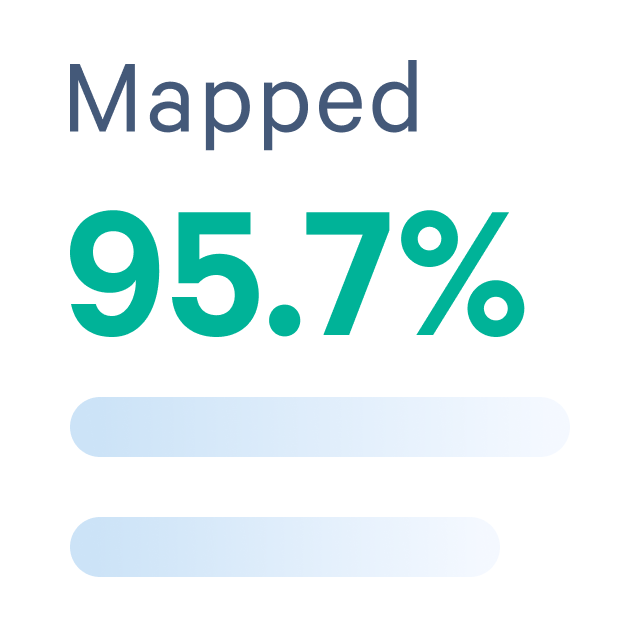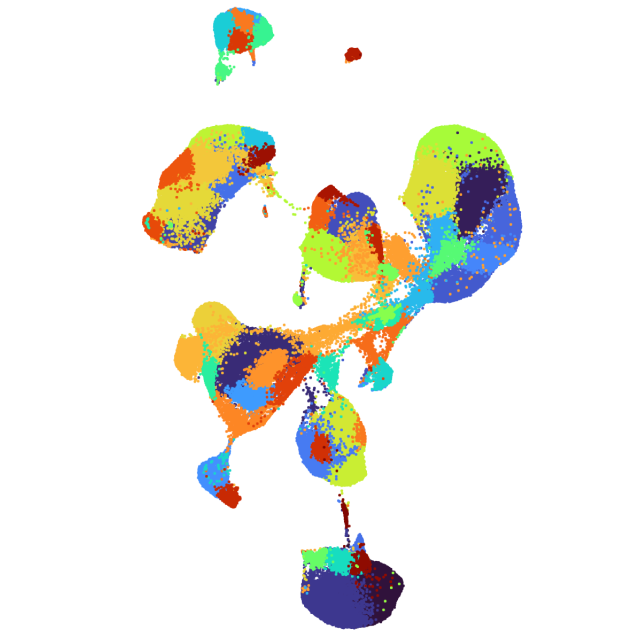Demultiplexing 5’ Immune Profiling Libraries Pooled with Hashtags
Universal 5' dataset analyzed using Cell Ranger 7.0.0


Learn about Chromium analysis
TotalSeq™-C antibodies from BioLegend can be used for cell hashing with the 10x Genomics 5' Immune Profiling workflow. Although the protocol is not officially supported, we have developed resources to help customers perform these experiments successfully. Please note that some warnings and errors that would not normally appear when performing supported workflows are expected to arise in the Cell Ranger web summaries of 5’ Immune Profiling with Cell Hashing experiments (as described below).
This example dataset accompanies the Analysis Guide Tutorial on using Cell Ranger to demultiplex and analyze 5' Gene Expression, TCR, BCR, and cell surface protein libraries from four individual donors that were stained with TotalSeq™-C antibodies and hashtags before pooling.
Cryopreserved peripheral blood mononuclear cells (PBMCs) from two healthy donors (Donor 1 and Donor 2) were purchased from AllCells. Cryopreserved Bone Marrow Mononuclear Cells (BMMCs) from Donor 3 and PBMCs from Donor 4, both diagnosed with Acute Lymphocytic Leukemia were purchased from Discovery Life Sciences.
Each sample was thawed and labeled with a panel of 130 TotalSeq™-C antibodies TotalSeq™ -C Human Universal Cocktail and a unique cell hashing antibody. Thus, each sample had a different cell hashing antibody. Samples were pooled in a 1:1 ratio. Amplified cDNA or DNA from labeled cells was used to generate Gene Expression (GEX), TCR, BCR, and cell surface protein (Antibody Capture Feature Barcode) libraries following the Single Cell V(D)J Reagent Kits User Guide CG000424 (5' v2 HT). For details on using the 5' Immune Profiling workflow for cell hashing, refer to this Can I perform Cell Hashing in the 5' workflow? Knowledge Base article.
Since each sample was stained with an antibody mix containing a unique hashtag oligo and a panel of 130 antibodies (TotalSeq™ -C Human Universal Cocktail), the unique hashtags oligos could be used for demultiplexing the samples. Therefore, a subset of the FB library is equivalent to the 3’ Cell Multiplexing Oligo (CMO) library. Since the combination of 5' chemistry with multiplexing is not officially supported, the web summary generated as a result of running this analysis is expected to show a few warnings and alerts (as described below).
CMO set used:
id,name,read,pattern,sequence,feature_type
Hash-tag1,Hash-tag1,R2,^NNNNNNNNNN(BC)NNNNNNNNN,GTCAACTCTTTAGCG,Multiplexing Capture
Hash-tag2,Hash-tag2,R2,^NNNNNNNNNN(BC)NNNNNNNNN,TGATGGCCTATTGGG,Multiplexing Capture
Hash-tag3,Hash-tag3,R2,^NNNNNNNNNN(BC)NNNNNNNNN,TTCCGCCTCTCTTTG,Multiplexing Capture
Hash-tag4,Hash-tag4,R2,^NNNNNNNNNN(BC)NNNNNNNNN,AGTAAGTTCAGCGTA,Multiplexing Capture
Hashing information:
- Healthy Donor 1: Hash Ab1
- Healthy Donor 2: Hash Ab2
- BMMC ALL Donor 3: Hash Ab3
- PBMC ALL Donor 4: Hash Ab4
All libraries were sequenced on an Illumina NovaSeq 6000 with a sequencing depth of:
- GEX library: 44,856 mean reads per cell
- Antibody Capture (FB) library: 8,052 mean reads per cell
- BCR library: 5,837 mean reads per cell
- TCR library: 5,043 mean reads per cell
Paired-end (28 X 90), dual-indexed sequencing with read configuration:
- Read 1: 28 cycles (16 bp barcode, 10 bp UMI)
- i7 index: 10 cycles
- i5 index: 10 cycles
- Read 2: 90 cycles (transcript)
BCL files were converted to FASTQ files using Illumina's BCL Convert.
GRCh38-2020-A reference transcriptome was used for bioinformatics analysis, and V(D)J Reference was vdj_GRCh38_alts_ensembl-7.1.0.
Demultiplexing web summary warnings
- High Fraction Unrecognized CMO Sequences: The web summary generated in the demultiplexing step (Step 1) shows an alert regarding a large fraction of unrecognized CMO sequences. A large fraction of unrecognized reads is expected in the context of this analysis since the CMO set CSV only includes hashing antibody-derived tags. TotalSeq™-C antibodies likely make up the remaining (unrecognized) reads (~ 70%).
Please note that if this alert appears in any other context (unrelated to demultiplexing 5’ cell hashing libraries), it must not be ignored. - Unsupported combination of 5' chemistry with multiplexing: A warning to indicate that this pipeline was developed for 3’ Single Cell Gene Expression workflows, and is not officially supported for 5’ Immune Profiling. Similar warnings also appear in the
Librariestab of the web summary. Please note that if this alert appears in any other context (unrelated to demultiplexing 5’ cell hashing libraries), it must not be ignored.
Final web summary warnings and errors
- Low Fraction Antibody Reads Usable: Alert seen in the
Metrics Per Physical Librarysection in theAntibodiesTab (Libraries) and is expected in the context of this analysis since only a small percentage of antibody reads are used when analyzing cells from a single sample (out of four samples) in the entire library. Given our experimental design, this alert does not indicate an error. However, if the alert appears in any other context (unrelated to demultiplexing 5’ cell hashing libraries), it must not be ignored. - Zero Median TRA UMIs per Cell for Donor 3: Analysis of Gene Expression and Antibody libraries from Donor 3 (bone marrow aspirate from a patient diagnosed with ALL) showed B cell expansion and memory B cell markers. These cells also expressed high levels of genes crucial to active V(D)J recombination, suggesting this process was incomplete and potentially leading to low observed levels of Ig/TCR pairing. High levels of genes necessary for V(D)J recombination indicate that the cells have lost their ability to express a functional antibody light chain, potentially due to cellular status and/or caused by mutations.
Dataset organization
All input and output files necessary to replicate the analysis described in the Demultiplexing and Analyzing 5’ Immune Profiling Libraries Pooled with Hashtags Analysis Guide are available for download via this page. The Demultiplexing tab contains raw FASTQ files and inputs necessary to run Step 1 (demultiplexing). Output BAM files are also provided in this tab. Sample-specific outputs generated in the final analysis (Step 3) are available in the individual Donor tabs. Raw outputs (cells + background barcodes) are located in the tabs labeled Donor # Final (multi). Input FASTQs, Feature Reference CSV, and a multi config CSV template are also available here. Filtered outputs (from barcodes called as cells) are located in the tabs labeled Donor # Final (per sample outs). A link to the web summary is provided on this tab.
Additional Resources
- Cell Hashing using the 10x Genomics 5' Immune Profiling workflow
- Demultiplexing and Analyzing 5’ Immune Profiling Libraries Pooled with Hashtags
This dataset is licensed under the Creative Commons Attribution 4.0 International (CC BY 4.0) license. 10x citation guidelines available here.